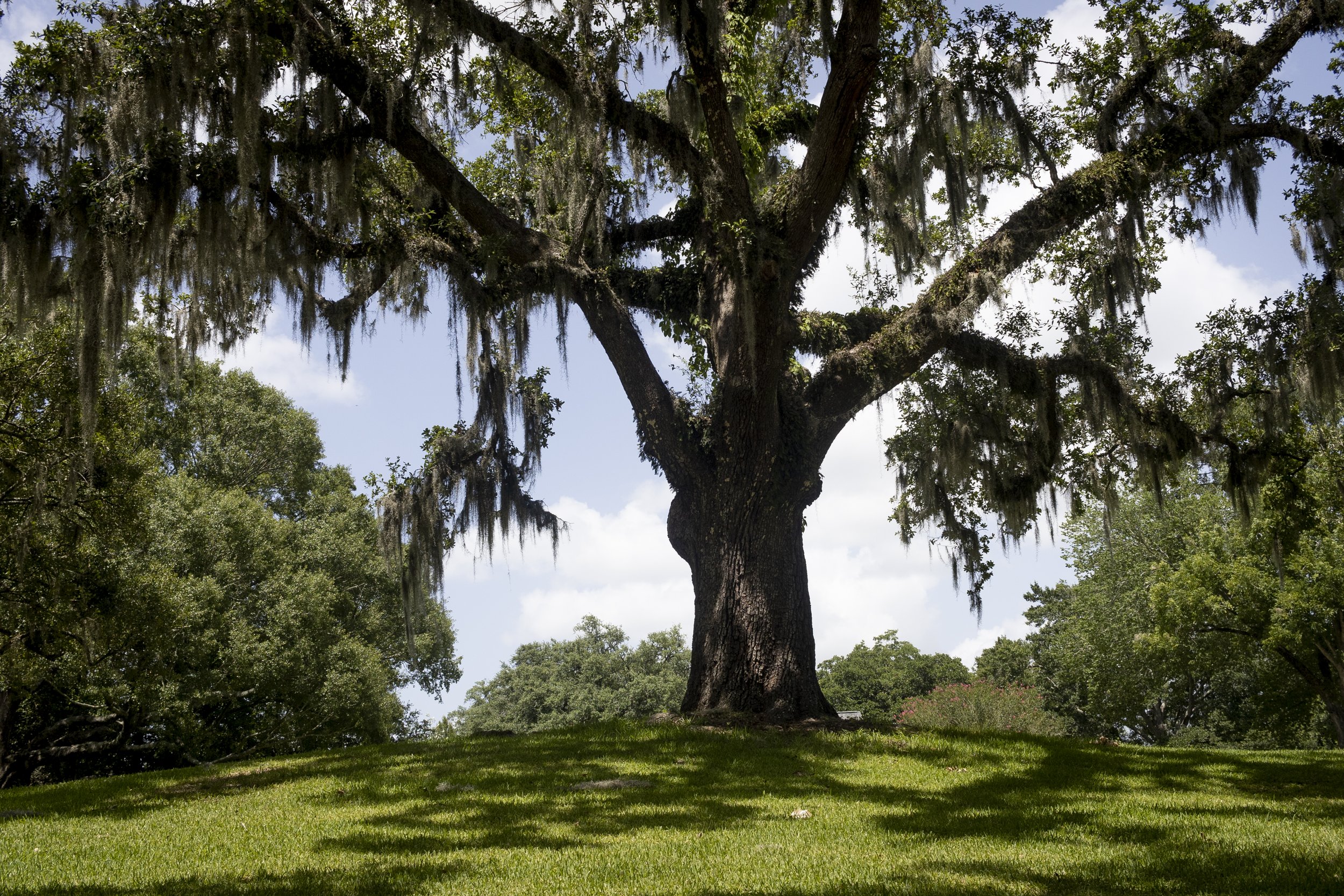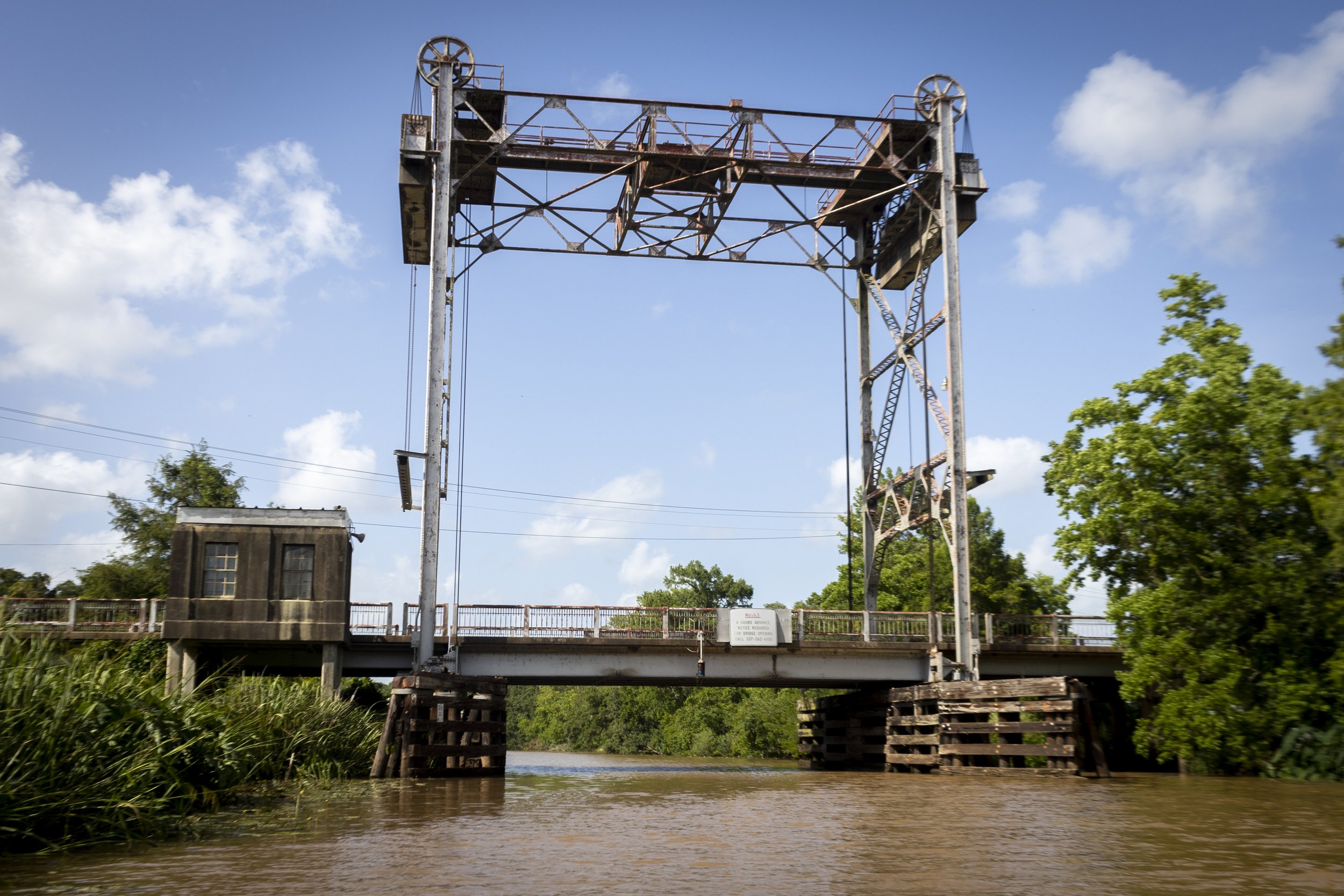
Bayou Teche
Zooming out to a geological perspective, Bayou Teche is just one of many ancient channels the Mississippi River gave birth to. Four thousand years ago, give or take a few hundred years, it was even that great river’s main course. Remember, a river the size of the Mississippi doesn’t snake politely and splashlessly toward its outlet. It fans out and zigzags as it approaches the Gulf of Mexico, seeping into swamps, flooding entire forests and splitting into uncountable streams. And since silt is always reshaping it, it’s always changing its mind, abandoning established deltas to form new ones. A river the size of the Mississippi isn’t one long neat meandering snake. It’s a snake giving birth to more snakes, each seeking its own winding course. Bayou Teche, from that zoomed-out perspective, is just one of those many snakes. And yet.
St. Martinville
A bayou can be the soul of a people. When a bayou is the perfect size for human use, it becomes a natural highway. Bayou Teche was big enough to get canoes, and eventually steamboats, up and down, small enough to build communities and trade routes alongside, and it lacked the maze-like treachery of the great swamp to its east. “Most handsomely endowed of the bayous,” it branches from Bayou Courtableau in St. Landry, then snakes gracefully southward for a hundred and thirty five miles, winding through St. Martin, Iberia and St. Mary, before ultimately finding its release in the snaking Atchafalaya, mere miles from the Gulf of Mexico.
For thousands of years the Teche Band of the Atakapas nation—represented, fittingly, by the snake—were at home among the lotus flowers there, settling in encampments along the bayou’s ample ridges, smoke-drying deer meat and hunting alligators. The name Atakapas—which means “man-eater” in Choctaw—originated as a slur toward the tribe, rumored to practice cannibalism. In their own language they call themselves Ishák—meaning “The People.” The last speaker of the Ishák language died in the early twentieth century, taking the living language with them, but today descendants of the Ishák nation continue to call southwestern Louisiana home.
Breaux Bridge
Initial incursions of European traders into the Atakapas territory began in the early 1700s, and in 1756 the French established a trading post, Poste des Attakapas, along a section of Bayou Teche that would eventually become known as St. Martinville. In 1765, Joseph Broussard and nearly two hundred Acadian refugees, ten years after their expulsion, desperate and destitute, settled along Bayou Teche just south of Poste des Attakapas, where the bayou loops so circuitously it forms a ridge and a small peninsula. Fertile, arable earth, access to nearby prairie and established trade routes to New Orleans all came together to form a thriving center of commerce based on cattle raising and agriculture—indigo initially, then later sugar cane, rice and corn—and the Acadians, later called Cajuns, prospered in their new subtropical homeland.
People of African descent have lived in the Bayou Teche corridor for as long as Europeans have, pre-dating the arrival of the Acadians in the area by decades. For almost a hundred and fifty years, enslaved people, mostly from the Senegambian region of West Africa, were taken to Louisiana and forced to provide labor for emerging cattle ranches and plantations.
St. Martinville
Most Acadians continued to operate as poor subsistence farmers, growing only enough for themselves and extended family, but there developed in St. Martin Parish a group of slave-owning cotton and sugar cane planters, including wealthy land-owners from England and Europe, who settled there after the Louisiana Purchase. Between 1760 and 1860, enslaved people constituted at least a third of the parish’s population. A small but prosperous class of free people of color, having obtained their freedom under certain provisions of French or Spanish law, became landowners, tradesmen and businessmen.
One need look no further than zydeco music, okra gumbo or the Louisiana Creole language itself—all of which have their roots in native, West African and European traditions—to see how the unique culture of St. Martin Parish is a reflection of the diverse generations who have called Bayou Teche their home.
Parks Bridge
Today Bayou Teche remains most handsomely endowed with live oaks, bald cypresses, elephant ears and lotuses, and while steamboats have not traveled to St. Martinville in some time, the bayou remains popular as a paddle trail. Through the efforts of the Teche Project, “a nonprofit organization passionate about making Bayou Teche a healthier waterway for fishing, kayaking, canoeing, boating, tubing and even swimming,” thirteen well-maintained access points, including boat launches and floating docks for canoes and kayaks, have been established along the snaking bends of Bayou Teche throughout its course. A map of the Teche Project Paddle Trail can be downloaded here .
Kayak launch in Arnaudville
If one day you find yourself paddling through, especially in the quieter sections of the bayou beyond the noise of traffic, and you’re left with only the sound of your paddle in the water and kingfishers squawking around you, send up a prayer of gratitude and remembrance to those who came before you.






